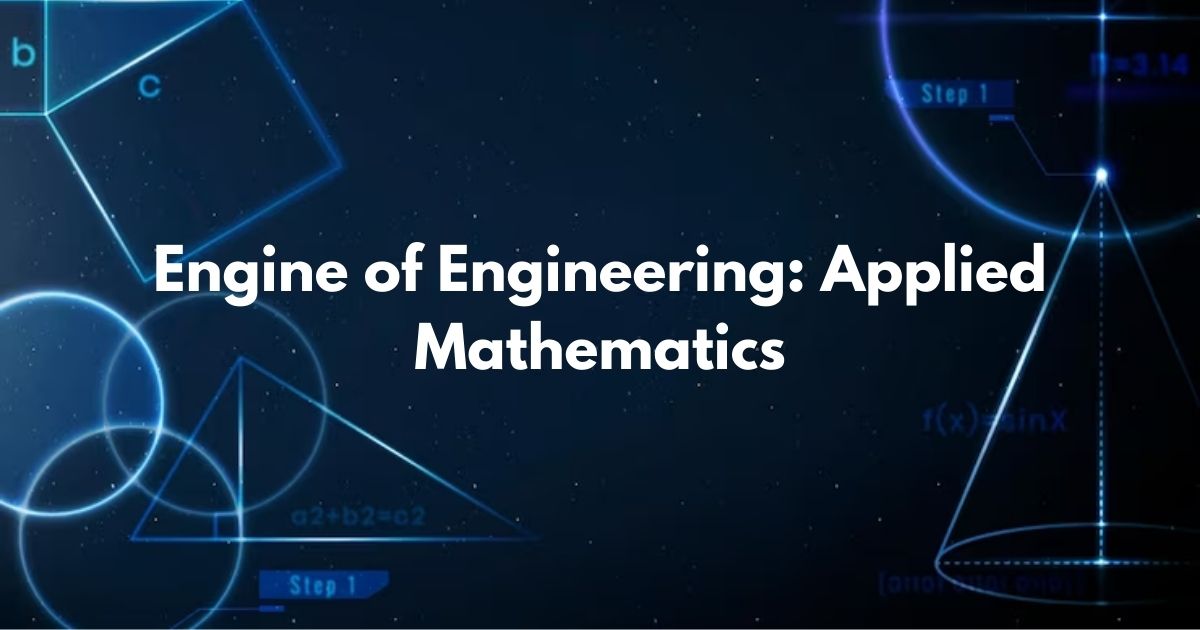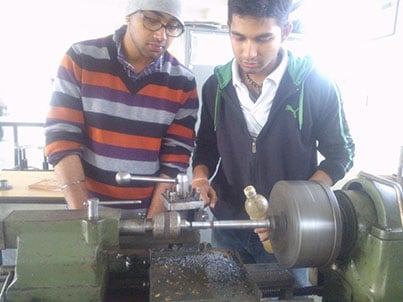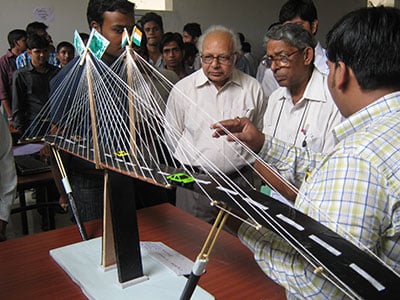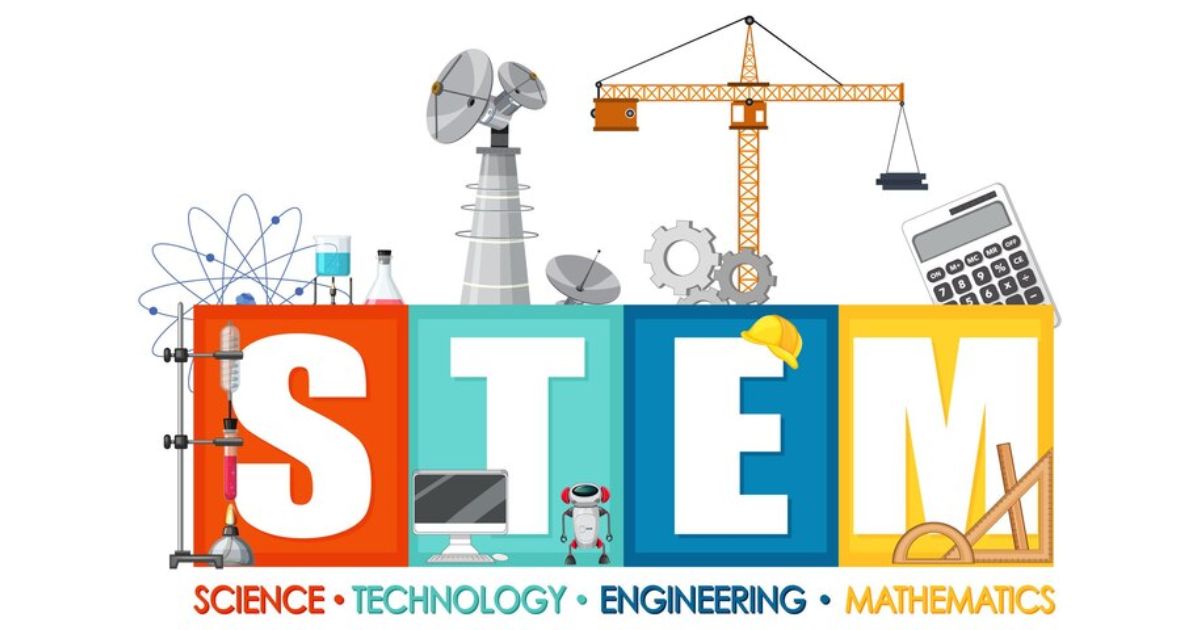A Taste of Mathematics: STEM Education
Mathematics is often viewed as a dry and abstract subject with little connection to the real world. Though, this perception couldn't be further from...

Engineering is a field that has contributed immensely to the development of modern society. Engineers design, build, and maintain the infrastructure and technology that we rely on daily. However, the foundation of engineering lies in the field of mathematics, particularly in the area of applied mathematics. Applied mathematics is the branch of mathematics that deals with the practical applications of mathematical principles. In this blog, we will explore the Engine of Engineering: Applied Mathematics.
The Role of Mathematics in Engineering Mathematics is essential in engineering because it provides the tools and techniques to solve complex problems. Engineers use basic mathematical concepts and formulas to design and analyze structures, machines, and systems. They also use mathematical models to predict the behavior of physical systems and to optimize their performance.
For example, when designing a bridge, an engineer uses mathematical principles to determine the dimensions of the bridge, the strength of the materials used, and the stresses and strains that the bridge will be subjected to. They also use mathematical models to predict how the bridge will perform under different conditions, such as wind, earthquakes, and heavy traffic.
Similarly, when designing a machine, an engineer uses mathematical principles to determine the forces and torques required to operate the machine, the power required to run the machine, and the efficiency of the machine. They also use mathematical models to simulate the operation of the machine and to optimize its performance.
Applied Mathematics in Engineering
Applied mathematics is the foundation of many engineering disciplines, including mechanical engineering, civil engineering, electrical engineering, and aerospace engineering, among others. Here are some examples of how applied mathematics is used in these fields.
Mechanical Engineering
Mechanical engineering is the branch of engineering that deals with the design, analysis, and manufacture of mechanical systems. Mechanical engineers use applied mathematics to design and analyze machines, vehicles, and other mechanical systems. They also use mathematical models to simulate the behavior of mechanical systems and to optimize their performance.
For example, when designing an automobile engine, a mechanical engineer uses mathematical principles to determine the power output of the engine, the fuel efficiency of the engine, and the emissions produced by the engine. They also use mathematical models to simulate the operation of the engine and to optimize its performance.

Civil Engineering
The field of civil engineering involves the planning, building, and upkeep of various structures in the built environment. In order to design and evaluate structures like dams, bridges, and buildings, civil engineers utilize principles of applied mathematics. Additionally, mathematical models are utilized by civil engineers to anticipate how structures will respond to a variety of conditions, including natural disasters like earthquakes and strong winds.
For example, when designing a skyscraper, a civil engineer uses mathematical principles to determine the loads that the building will be subjected to, the stresses and strains that the building will experience, and the stability of the building under different conditions. They also use mathematical models to simulate the behavior of the building under different conditions and to optimize its design.

Electrical Engineering
Electrical engineering is the branch of engineering that deals with the design and development of electrical systems. Electrical engineers use applied mathematics to design and analyze electrical circuits, control systems, and power systems. They also use mathematical models to simulate the behavior of electrical systems and to optimize their performance.
For example, when designing a power grid, an electrical engineer uses mathematical principles to determine the capacity of the grid, the voltage levels of the grid, and the power losses in the grid. They also use mathematical models to simulate the operation of the grid and to optimize its performance.

Aerospace Engineering
Aerospace engineering is the branch of engineering that deals with the design and development of aircraft and spacecraft. Aerospace engineers use applied mathematics to design and analyze aircraft and spacecraft structures, propulsion systems, and control systems. They also use mathematical models to simulate the behavior of aircraft and spacecraft under different conditions.
For example, when designing a spacecraft, an aerospace engineer uses mathematical principles to determine the trajectory.
Mathematics plays a fundamental role in computer systems, and it is essential for all computer scientists and programmers to have basic mathematical knowledge. The specific type and level of mathematics required depend on the area of computer science that one wishes to pursue. Certain career paths within computer science may require only a minimal level of mathematical knowledge. For instance, if one has a grasp of basic programming languages and can perform simple arithmetic, they can develop basic mobile apps.
However, those who desire to advance their computer science career, particularly in areas such as computer security or operating systems, must have an understanding of higher-level mathematical concepts. While computer scientists are not expected to have the same level of expertise as mathematicians, studying math at the high school or college level can open up new opportunities.

Electronics and Communication Engineering
Mathematics plays a crucial role in Electrical Engineering, particularly in the field of Calculus. Almost all aspects of the field, ranging from circuit theory to control systems, thermodynamics, microprocessors, digital signal processing, linear control systems, high voltage engineering, robotics, microcontroller programming, solar energy structures, and communication, are founded on this principle.
Trigonometric identities are used extensively in the calculation of current, power, efficiency, RLC circuits, and other useful quantities related to voltage generation. Linear algebra finds its application in digital signal processing, communication systems, error control coding, circuit analysis, robotics circuits, and power systems.
Differential equations, including ordinary, linear, non-linear, and partial, are vital components of Electrical Engineering, finding application in basic electric machines, power systems, antennas, optics, and image processing. Fourier Transforms are utilized for signal processing, heat transfer, power systems, and control systems. Vector Algebra is applied in electromagnetism, while Probability and Statistics are necessary to determine signal and event probabilities in telecommunication systems and random events.

Mathematics is often viewed as a dry and abstract subject with little connection to the real world. Though, this perception couldn't be further from...

Engineering has long been a male-dominated field in India, but in recent years, more and more girls are pursuing engineering courses and breaking the...

In the world of engineering and materials science, innovation is the driving force that pushes boundaries and shapes the future. One such innovation...